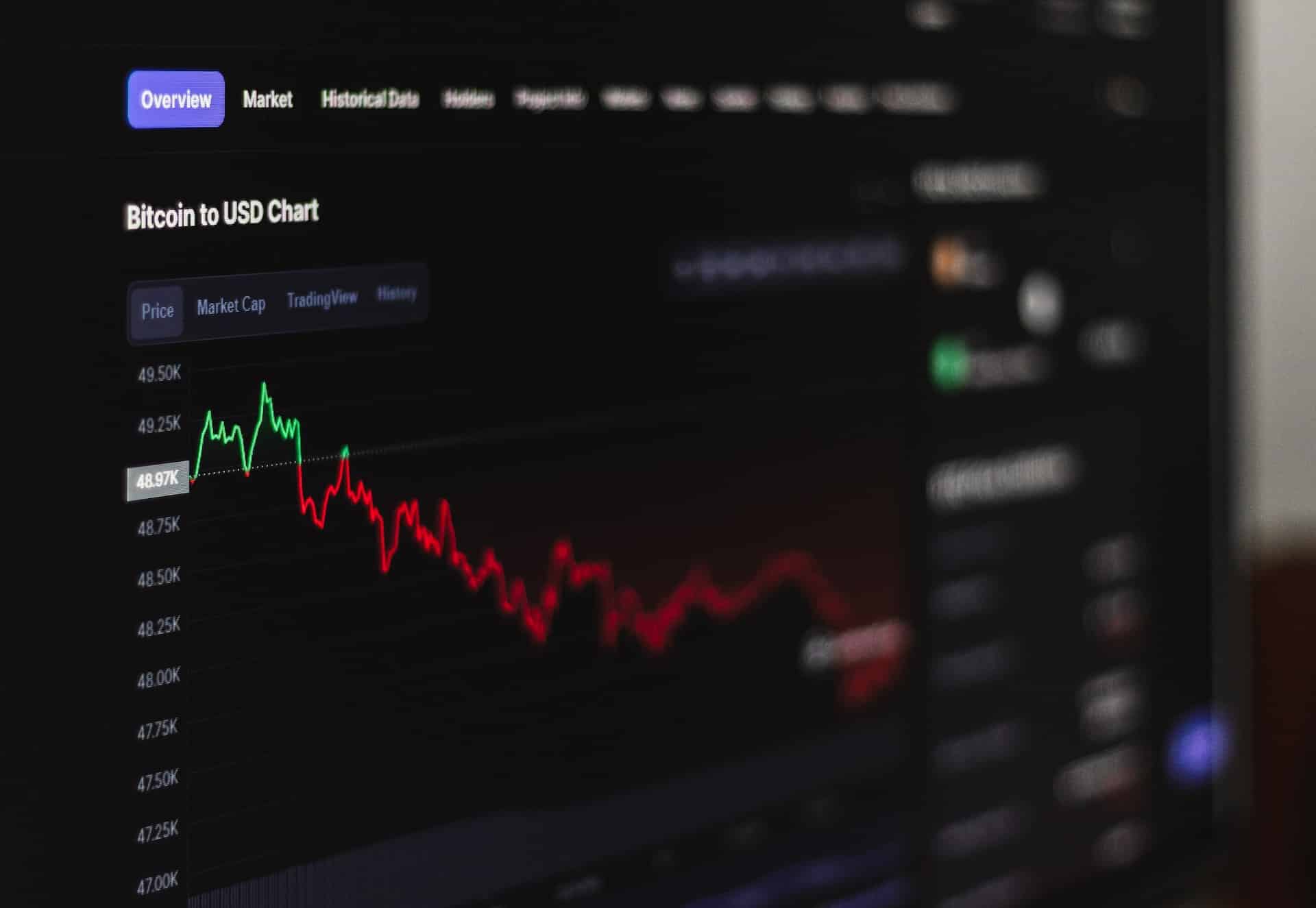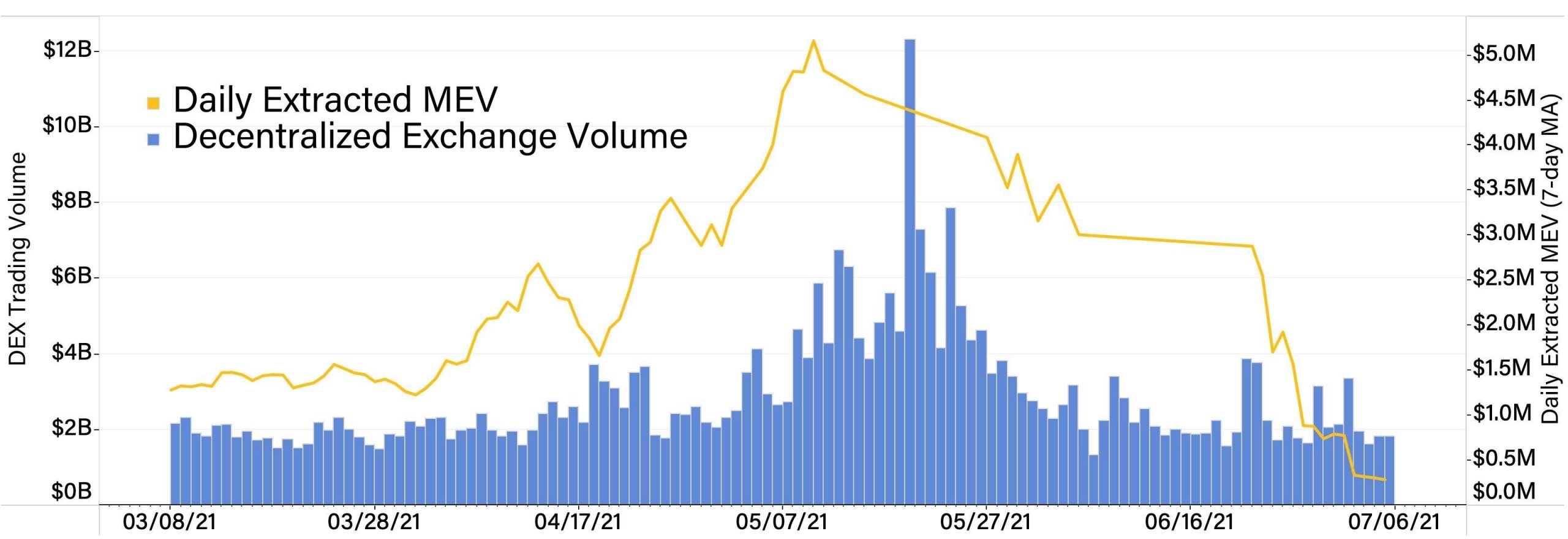Introduction
Cryptocurrency trading has become a popular investment strategy in recent years, with traders looking to capitalize on the volatility of digital assets. One such strategy that has gained traction is arbitrage trading. If you’re new to the world of crypto trading, you may be wondering, “What is arbitrage trading in crypto?”
Arbitrage trading is a method used to profit from the price differences of cryptocurrencies across multiple exchanges. By taking advantage of these price discrepancies, traders can buy low on one exchange and sell high on another, making a profit in the process. This trading strategy relies on the principle that different exchanges may offer different prices for the same cryptocurrency due to variations in demand, liquidity, and market conditions.
The cryptocurrency market operates 24/7, making it highly volatile and fast-paced. This volatility creates opportunities for arbitrage traders to exploit temporary imbalances in prices. However, it’s essential to note that arbitrage trading requires speed, precision, and market awareness, as price differences can narrow or disappear within seconds.
Cryptocurrency exchanges are not interconnected, resulting in varying prices for the same digital asset across different platforms. These differences can arise due to geographical location, liquidity, exchange regulations, and the overall structure of the exchange. By identifying these price discrepancies and executing trades promptly, arbitrage traders aim to make a profit without exposing themselves to significant market risks.
Arbitrage trading in the crypto market offers several advantages. Firstly, it provides an opportunity for traders to generate profits regardless of the overall market direction. Whether the market is experiencing a bull run or a bear market, arbitrage traders can potentially earn profits as long as there are price discrepancies to exploit.
Moreover, arbitrage trading in cryptocurrencies can provide a form of market efficiency. As traders take advantage of price differences, they help reduce the price gaps across different exchanges, promoting a more even and balanced market. Additionally, arbitrage trading can contribute to increased liquidity in the market, as traders actively buy and sell digital assets on various platforms.
However, arbitrage trading is not without its risks and challenges. The crypto market’s decentralized nature means that transferring funds between exchanges can take time, impacting the speed and efficiency of executing trades. Moreover, sudden market fluctuations and high trading volumes can lead to slippage and potential loss of profits for arbitrage traders.
In the following sections, we will explore how arbitrage trading works in more detail, discuss the benefits and risks involved, and provide guidance on getting started with arbitrage trading in the crypto market. So, whether you’re a seasoned trader or a newcomer to the world of cryptocurrencies, stay tuned to learn more about the exciting world of arbitrage trading in crypto.
What is Arbitrage Trading?
Arbitrage trading, in the context of cryptocurrencies, is a trading strategy that aims to profit from the price differences of digital assets on different exchanges. It is based on the principle of buying low on one exchange and selling high on another, taking advantage of temporary price discrepancies.
The concept of arbitrage trading originated in the traditional financial markets, where traders seek to profit from price inefficiencies between different stock exchanges or financial instruments. In the cryptocurrency market, the same principle applies, but with the added complexity of decentralized exchanges and numerous digital assets to choose from.
The main idea behind arbitrage trading is that prices of a particular cryptocurrency, such as Bitcoin or Ethereum, can fluctuate across different exchanges due to factors like supply and demand dynamics, liquidity variations, and geographical location. These price differences can create opportunities for traders to make profits by exploiting the temporary imbalances.
To execute an arbitrage trade, a trader would typically follow a series of steps. Firstly, they would monitor and compare the prices of a specific cryptocurrency on multiple exchanges. When they identify a price difference that is significant enough to cover trading fees and potential risks, they would then proceed with the trade.
For example, let’s say Bitcoin is priced at $10,000 on Exchange A and $10,200 on Exchange B. An arbitrage trader could buy Bitcoin on Exchange A at the lower price and simultaneously sell it on Exchange B at the higher price. The trader would make a profit of 0 per Bitcoin, minus any transaction fees incurred during the process.
It’s important to note that arbitrage trading requires speed and efficiency, as price discrepancies can narrow or disappear rapidly. Traders often use automated tools and algorithms to monitor prices and execute trades swiftly. This approach enables them to capitalize on short-lived opportunities before the market adjusts and the prices converge.
In recent years, the proliferation of cryptocurrency arbitrage bots and trading platforms has made arbitrage trading more accessible to a broader range of traders. These tools can scan multiple exchanges simultaneously and execute trades automatically when favorable conditions arise.
However, it’s crucial to understand that arbitrage trading is not risk-free. Market volatility, liquidity constraints, and transaction fees can impact the profitability of trades. Moreover, delays in fund transfers between exchanges can lead to missed opportunities or financial losses. Traders should also consider the legal and regulatory aspects of arbitrage trading, as different countries may have varying regulations regarding cryptocurrency trading.
In the following sections, we will delve into the workings of arbitrage trading in more detail, explore its benefits and risks, and provide insights on how to get started with arbitrage trading in the cryptocurrency market. So, if you’re curious about harnessing the potential of price discrepancies in the world of digital assets, keep reading to learn more.
Cryptocurrency Market and Price Differences
The cryptocurrency market, characterized by its decentralized nature, is made up of numerous exchanges where digital assets can be bought and sold. Each exchange operates independently, resulting in potential price differences for the same cryptocurrency across different platforms.
Several factors contribute to these price discrepancies. Firstly, the availability and demand for a particular cryptocurrency can vary between exchanges. If there is a high demand for Bitcoin on Exchange A but a lower demand on Exchange B, the price on Exchange A may be higher due to limited supply.
Liquidity, or the ease and speed at which an asset can be bought or sold, also plays a significant role in price differences. Exchanges with higher liquidity tend to have narrower bid-ask spreads, reducing the potential for arbitrage opportunities. Conversely, exchanges with lower liquidity may experience wider spreads, creating potential opportunities for arbitrage traders.
Geographical location is another factor that can impact cryptocurrency prices. Different exchanges may cater to specific regions or have different regulatory frameworks, which can influence the demand and supply dynamics and result in varying prices.
Furthermore, the overall structure and policies of exchanges can contribute to price differences. Some exchanges may have specific order types or trading rules that impact pricing. For example, certain exchanges may charge higher fees for market orders or have different fee structures for takers and makers, leading to variations in prices.
It’s also worth noting that the speed and efficiency of information dissemination can play a role in price differences. News or significant events relating to a cryptocurrency may reach one exchange before others, causing price disparities to emerge temporarily before the market reacts and prices equalize.
Arbitrage traders leverage these price differences by simultaneously buying the cryptocurrency at a lower price on one exchange and selling it at a higher price on another. This strategy aims to exploit the inefficiencies and imbalances in the market to generate profit.
However, it’s important to recognize that market forces and arbitrage trading itself contribute to price convergence. As traders execute arbitrage trades, the buying pressure on exchanges with lower prices increases while the selling pressure on exchanges with higher prices intensifies. This increased demand and supply eventually narrows the price gaps and brings the market closer to equilibrium.
In the next sections, we will delve deeper into how arbitrage trading works and explore its benefits and risks. We will also provide guidelines on getting started with arbitrage trading in the cryptocurrency market. So, if you’re curious to learn more about taking advantage of price differences in the exciting realm of cryptocurrencies, keep reading.
How Does Arbitrage Trading Work?
Arbitrage trading in the cryptocurrency market involves taking advantage of price differences for the same digital asset on different exchanges. To understand how it works, let’s explore the steps involved in executing an arbitrage trade.
1. Research and Monitoring: Arbitrage traders start by researching and identifying potential trading opportunities. They analyze different exchanges and compare the prices of a specific cryptocurrency to spot significant price differences. Automated tools and algorithms can assist in monitoring multiple exchanges simultaneously.
2. Price Comparison and Analysis: Once potential price discrepancies are identified, traders analyze the price gaps to determine if they are large enough to cover trading fees and potential risks. They also consider factors such as liquidity, trading volume, and order book depth to assess the likelihood of successfully executing the trade.
3. Funds Transfer: Before executing an arbitrage trade, traders need to transfer funds between exchanges. This step can take time and may impact the speed and efficiency of the trade. It’s essential to account for transfer fees and delays when calculating potential profits.
4. Buy on Exchange A: After funds are transferred to the desired exchange, traders buy the cryptocurrency at the lower price. It’s crucial to act swiftly to secure the desired quantity at the favorable price before it changes.
5. Sell on Exchange B: Simultaneously, traders sell the same cryptocurrency on another exchange at the higher price. Again, speed is crucial to maximizing profits as price differences can narrow or disappear rapidly.
6. Transaction Execution and Accounting for Fees: When executing the trades, traders need to consider transaction fees on both exchanges. These fees can impact overall profitability and should be factored into the analysis and decision-making process.
7. Risk Management and Exit Strategy: As with any trading strategy, risk management is essential in arbitrage trading. Traders need to set stop-loss orders and monitor market conditions to minimize potential losses. Additionally, having an exit strategy and predetermined profit targets can help lock in profits and avoid holding positions for too long.
8. Continuous Monitoring and Adjustments: Arbitrage trading requires diligent monitoring of market conditions, price disparities, and order execution. Traders should be prepared to adjust their strategies and adapt to changing market dynamics to optimize their arbitrage trading activities.
It’s important to note that while arbitrage trading can be profitable, it is not entirely risk-free. Market volatility, high trading volumes, liquidity constraints, and delays in fund transfers between exchanges can impact the success of arbitrage trades. Traders should carefully consider these factors and perform thorough risk assessments before engaging in arbitrage trading.
In the following sections, we will explore the benefits and risks of arbitrage trading in the cryptocurrency market and provide guidance on best practices for successful trading. So, if you’re interested in harnessing the potential of price discrepancies in the exciting world of cryptocurrencies, stay tuned for more insights.
Benefits of Arbitrage Trading in Crypto
Arbitrage trading in the cryptocurrency market offers several potential benefits for traders. Let’s explore some of these advantages:
1. Profit Opportunities: One of the primary benefits of arbitrage trading is the potential to generate profits regardless of the overall market direction. Whether the market is bullish, bearish, or ranging, traders can capitalize on price differences to earn profits. This makes arbitrage trading a versatile strategy that can be employed in various market conditions.
2. Market Efficiency: Arbitrage trading contributes to increasing market efficiency by reducing price discrepancies across different exchanges. As traders actively buy and sell the same cryptocurrency at different prices, it helps narrow the gaps and brings prices closer to equilibrium. This, in turn, promotes a more balanced and efficient market.
3. Risk Diversification: Arbitrage trading allows traders to diversify their risk exposure. By simultaneously buying and selling the same asset but on different exchanges, traders can mitigate the risk associated with holding positions in a single market. This diversification helps protect traders from sudden market shocks and unfavorable price movements.
4. Increased Liquidity: As arbitrage traders execute trades across multiple exchanges, they contribute to increased liquidity in the market. By actively buying and selling digital assets, they add depth to order books and enhance overall market liquidity. This increased liquidity benefits all traders by reducing slippage and ensuring smoother execution of trades.
5. Technology and Automation: The advancement of technology has made arbitrage trading more accessible and efficient. Traders can leverage automated tools, algorithms, and trading bots to monitor price disparities and execute trades swiftly. These tools help save time, enhance accuracy, and enable traders to capitalize on short-lived opportunities.
6. Lower Dependency on Overall Market Conditions: Unlike other trading strategies that rely on the overall market trend, arbitrage trading is less dependent on the direction of the market. As long as there are price discrepancies to exploit, traders can potentially earn profits irrespective of whether the market is bullish or bearish. This versatility provides additional flexibility to traders.
7. Educational and Learning Opportunities: Engaging in arbitrage trading requires in-depth knowledge of different exchanges, the mechanics of trading, and market dynamics. Traders gain valuable insights into the functioning of different platforms, liquidity variations, and regulatory considerations. This ongoing learning process can help traders enhance their overall trading skills and knowledge.
While arbitrage trading offers numerous benefits, it is important to consider the risks and challenges associated with this trading strategy. Market volatility, liquidity fluctuations, transaction fees, and regulatory considerations can impact the profitability of trades. Traders should perform thorough analysis, risk assessment, and adhere to best practices to maximize their chances of success.
In the upcoming sections, we will explore the risks and challenges of arbitrage trading in the cryptocurrency market and provide practical guidelines for getting started. So, if you’re intrigued by the potential benefits arbitrage trading offers, stay tuned for more insights and recommendations.
Risks and Challenges of Arbitrage Trading
While arbitrage trading in the cryptocurrency market offers potential benefits, it is not without its risks and challenges. Traders should be aware of these factors to make informed decisions and manage their risk effectively. Let’s explore some of the main risks and challenges associated with arbitrage trading:
1. Market Volatility: The cryptocurrency market is known for its high volatility. Prices can fluctuate rapidly, making it crucial for arbitrage traders to act swiftly. However, sudden price movements can also lead to price slippage, where the executed trade occurs at a different price than expected. This slippage can reduce profitability or even turn potential profits into losses.
2. Liquidity Constraints: Liquidity variations between different exchanges can impact the execution of arbitrage trades. Low liquidity on certain exchanges may result in wider bid-ask spreads, making it harder to execute trades profitably. Also, large trading volumes can deplete liquidity and make it challenging to enter and exit positions smoothly.
3. Transaction and Transfer Fees: Every trade incurs transaction fees on both the buying and selling exchanges. These fees can eat into potential profits, especially when executing multiple trades. Additionally, transferring funds between exchanges often incurs fees and may introduce delays, making it essential for traders to factor these costs into their risk analysis.
4. Funds Transfer Delays: Transferring funds between exchanges can take time and introduce delays in executing trades. While waiting for the transfer to complete, market conditions may change, and price disparities may disappear. Traders need to consider the time it takes to transfer funds and ensure they can execute trades promptly to take advantage of opportunities.
5. Regulatory Considerations: Cryptocurrency regulations vary across different jurisdictions. Traders need to stay informed about the legal and regulatory requirements imposed by the exchanges they operate on. Compliance with Know Your Customer (KYC) and Anti-Money Laundering (AML) regulations may be necessary, adding an additional layer of complexity and potential risk.
6. Counterparty Risk: Arbitrage trading involves interacting with multiple exchanges, each with its own set of risks. These risks include the security and reliability of the exchange, potential hacking incidents, issues with order execution, and the solvency of the exchange itself. Traders must carefully choose reputable exchanges and prioritize the security of their funds.
7. Operational Complexity: Executing arbitrage trades can be operationally complex and require careful attention to detail. Traders need to monitor multiple exchanges, calculate profits after fees, transfer funds efficiently, and manage trading positions effectively. It is essential to develop robust strategies and utilize automation tools to handle the complexity efficiently.
It is important for arbitrage traders to conduct thorough research, perform risk assessments, and develop a comprehensive risk management strategy. This includes setting stop-loss orders, diversifying trading activities, and continuously monitoring market conditions. By understanding and addressing these risks and challenges, traders can improve their chances of success in the arbitrage trading arena.
In the upcoming sections, we will delve deeper into getting started with arbitrage trading, exploring best practices, and addressing legal and regulatory considerations. So, if you’re considering arbitrage trading as an investment strategy, keep reading for valuable insights and practical guidance.
Getting Started with Arbitrage Trading
If you’re interested in exploring the world of arbitrage trading in the cryptocurrency market, here are some essential steps to get you started:
1. Research and Education: Before diving into arbitrage trading, it’s crucial to educate yourself about the cryptocurrency market, different exchanges, and the mechanics of trading. Familiarize yourself with the concepts of bid-ask spreads, order books, and liquidity. Stay updated with news and developments in the crypto industry to better understand market dynamics.
2. Choose Reliable Exchanges: Select reputable and secure cryptocurrency exchanges to execute your arbitrage trades. Look for exchanges with high trading volumes, good liquidity, and a solid track record. Conduct thorough research on the exchanges’ security measures and regulatory compliance to mitigate counterparty risks.
3. Analyze Price Differences: Use cryptocurrency price comparison tools or exchange APIs to identify potential price discrepancies across different exchanges. It’s important to note that price differences may change rapidly, so it’s crucial to monitor the market in real-time and be ready to take advantage of arbitrage opportunities.
4. Consider Trading Fees: When calculating potential profits, factor in the transaction fees charged by each exchange. Different exchanges have varying fee structures, including percentage-based fees or fixed fees per trade. Take into account both the trading fees for executing trades and any fees incurred during the transfer of funds between exchanges.
5. Account for Transfer Times: Keep in mind that transferring funds between exchanges may introduce delays. Understand the average time it takes for the transfer to complete, as well as any minimum deposit or withdrawal requirements. Time is of the essence in arbitrage trading, so consider the transfer times when evaluating potential arbitrage opportunities.
6. Develop a Risk Management Strategy: Establish a risk management strategy to protect your capital and minimize potential losses. Set stop-loss orders to automatically exit a trade if the price moves against you. Diversify your trading capital across multiple trading pairs and exchanges to reduce risk exposure. Continuously monitor market conditions and adjust your trading activities accordingly.
7. Utilize Automation Tools: Consider using automated trading bots or tools specifically designed for arbitrage trading. These tools scan multiple exchanges in real-time and execute trades automatically when favorable price discrepancies are detected. Automation can help improve efficiency, speed, accuracy, and reduce human error in executing arbitrage trades.
8. Start with a Small Investment: It’s advisable to start with a small investment to familiarize yourself with the complexities and risks of arbitrage trading. As you gain experience and confidence, you can gradually increase your trading capital. Remember, patience and discipline are key to successful trading.
9. Continuous Learning and Adaptation: The cryptocurrency market and arbitrage opportunities are constantly evolving. Stay updated with market trends, new exchanges, and technological advancements. Monitor and analyze your trading activities regularly to identify areas for improvement and refine your strategies.
Arbitrage trading requires careful attention to detail, patience, and continuous learning. It is essential to perform thorough research, develop a well-defined trading plan, and adapt as you gain experience in the market.
In the next section, we will explore best practices for successful arbitrage trading in the cryptocurrency market. These practices will help you navigate the challenges and optimize your trading activities. So, if you’re dedicated to becoming a successful arbitrage trader, stay tuned for valuable tips and insights.
Best Practices for Successful Arbitrage Trading
To increase your chances of success in arbitrage trading in the cryptocurrency market, it’s essential to follow these best practices:
1. Real-Time Market Monitoring: Stay vigilant and constantly monitor the market for potential arbitrage opportunities. Use reliable price comparison tools or exchanges with real-time data to identify and track price discrepancies. Being prompt and decisive is crucial as price differences can quickly shrink or disappear.
2. Efficient Fund Transfers: Optimize the efficiency of funds transfer between exchanges. Choose exchanges that offer fast and reliable fund transfer options. Consider the transaction fees, transfer times, and any minimum deposit or withdrawal requirements. Timely transfers are crucial to exploit price differences effectively.
3. Risk Management: Implement a robust risk management strategy to protect your capital. Set appropriate stop-loss orders to limit potential losses in case the market moves against your position. Diversify your portfolio across different cryptocurrencies and exchanges to reduce risk exposure.
4. Stay Updated on Regulation: Understand the legal and regulatory implications of arbitrage trading in your jurisdiction. Stay informed about changes in cryptocurrency regulations to ensure compliance. Adhering to KYC and AML guidelines is crucial for a smooth and uninterrupted trading experience.
5. Security Measures: Prioritize the security of your funds and personal information. Use exchanges that have strong security measures, such as two-factor authentication (2FA) and cold storage of funds. Regularly update your passwords and use hardware wallets to protect your digital assets.
6. Utilize Automation Tools: Leverage automated trading bots or tools specifically designed for arbitrage trading. These tools can analyze market conditions, execute trades promptly, and minimize human error. However, it’s important to thoroughly research and test these tools before using them with real funds.
7. Analyze Historical Data: Utilize historical data of cryptocurrencies and different exchanges to identify patterns and trends. Understanding the historical price movements can help you make more informed decisions when evaluating potential arbitrage opportunities.
8. Practice Patience and Discipline: Arbitrage trading requires patience and discipline. Don’t rush into trades without conducting proper research and analysis. Avoid making impulsive decisions based on emotions or short-term market fluctuations. Stick to your trading plan and follow your predefined exit strategies.
9. Continuous Learning: Stay updated with the latest trends, news, and developments in the cryptocurrency market. Join forums, participate in discussions, and network with other traders to gain valuable insights. Continuous learning will help you adapt to market changes and refine your arbitrage trading strategies.
Remember, arbitrage trading is a dynamic and competitive space. Success does not come overnight, and it’s important to manage your expectations. Start with small investments, track your performance, and continuously evaluate and refine your trading strategies.
In the following section, we will explore the legal and regulatory considerations in arbitrage trading. Understanding and complying with these factors is essential to operate within the legal boundaries of your jurisdiction. So, stay tuned for important insights and guidelines.
Legal and Regulatory Considerations
When engaging in arbitrage trading in the cryptocurrency market, it’s important to be aware of the legal and regulatory landscape to ensure compliance and mitigate potential risks. Here are some key considerations to keep in mind:
1. Know Your Jurisdiction: Cryptocurrency regulations vary from country to country, and sometimes even within regions or states. Familiarize yourself with the specific laws and regulations governing cryptocurrency trading in your jurisdiction. Be aware of any licensing requirements or restrictions placed on exchanges or traders.
2. KYC and AML Compliance: Many jurisdictions require cryptocurrency exchanges to adhere to Know Your Customer (KYC) and Anti-Money Laundering (AML) regulations. This includes verifying the identities of users and implementing robust customer due diligence procedures. Ensure that the exchanges you use are compliant with these regulations to protect yourself from legal issues.
3. Tax Obligations: Cryptocurrency trading may have tax implications. Consult with a tax professional or seek guidance from your local tax authority to understand your tax obligations as an arbitrage trader. Keeping accurate records of your trades and transactions is crucial for accurate reporting and compliance.
4. Licensing and Registration: Some jurisdictions may require cryptocurrency exchanges and related businesses to obtain specific licenses or registrations. Ensure that the exchanges you use are licensed and regulated by the appropriate authorities. Operating on unregulated or unlicensed platforms may expose you to legal risks and potential fraud.
5. Exchange Policies: Each cryptocurrency exchange has its own terms of service and policies. Before engaging in arbitrage trading, carefully review the exchange’s rules and regulations. Pay attention to withdrawal limits, trading fees, and any restrictions or limitations that may affect your trading activities.
6. Security and Privacy: Protecting your personal information and cryptocurrency holdings is vital. Choose reputable exchanges that have robust security measures, such as two-factor authentication (2FA) and encryption protocols. Additionally, be cautious about sharing personal information and beware of phishing attempts or fraudulent platforms.
7. International Compliance: If you plan to engage in cross-border arbitrage trading, be aware of the international regulations and compliance requirements. Different countries may have their own restrictions and regulatory frameworks for cryptocurrency trading. Complying with the laws of both your home country and the countries where the exchanges are located is essential.
8. Consumer Protection: Consider the level of consumer protection offered by different exchanges. Look for exchanges that implement measures to safeguard user funds and provide transparent trading practices. Research user reviews and ratings to assess the reputation and reliability of an exchange.
It’s important to note that the legal and regulatory environment surrounding cryptocurrencies is evolving. Stay updated with the latest developments and regulatory changes in your jurisdiction. Engaging the services of legal and financial professionals who specialize in cryptocurrency matters can also provide valuable guidance and ensure compliance.
In the final section, we will summarize the key points discussed and provide a concluding remark on arbitrage trading in the cryptocurrency market. So, keep reading for a concise recap and a final thought on this trading strategy.
Conclusion
Arbitrage trading in the cryptocurrency market can offer exciting opportunities for traders to profit from price differences across different exchanges. By buying low on one exchange and selling high on another, arbitrage traders can capitalize on temporary imbalances in the market.
Throughout this article, we have explored the intricacies of arbitrage trading, including its definition, how it works, potential benefits, risks, and best practices. We’ve discussed the importance of continuous learning, risk management, and the utilization of automation tools to enhance efficiency and accuracy in executing trades.
However, it’s crucial to recognize that arbitrage trading is not without its challenges. Market volatility, liquidity constraints, transaction fees, and regulatory considerations all pose potential risks to traders. It’s important to approach arbitrage trading with caution, conduct thorough research, and develop a robust risk management strategy.
Additionally, understanding the legal and regulatory landscape of cryptocurrency trading in your jurisdiction is paramount. Compliance with KYC and AML regulations, tax obligations, and licensing requirements can help traders operate within the legal boundaries and avoid legal complications.
Overall, arbitrage trading is a dynamic and potentially profitable strategy for those willing to put in the effort, research, and risk management required. It requires constant monitoring of the market, analysis of price disparities, and quick execution of trades.
As with any trading strategy, success in arbitrage trading comes with experience, education, and adaptability. It’s important to start with a small investment, track your performance, and continuously evaluate and refine your trading strategies based on market conditions.
Arbitrage trading can be an enticing option for those looking to capitalize on the fast-paced and volatile nature of the cryptocurrency market. By understanding the mechanics and risks involved, staying updated with market trends, and adhering to best practices, traders can navigate the challenges and potentially achieve success in this niche trading strategy.
Remember, the world of cryptocurrency and arbitrage trading is constantly evolving. Stay curious, be willing to learn, and always stay informed to make the most informed decisions in your trading endeavors.
So, whether you’re a seasoned trader or just starting your journey into the world of cryptocurrencies, we hope this article has provided valuable insights to help you navigate the exciting world of arbitrage trading in the cryptocurrency market.

























